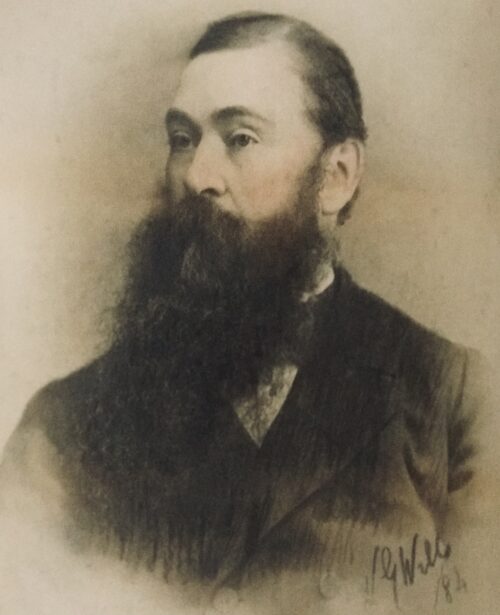30cm x 65cm
BEFORE THE ADVENT of opinion polls, by-elections were the most reliable means of gauging the mood of the electorate.
For decades before the 1916 Rising, Irish nationalists represented by the Irish Parliamentary Party (IPP) sought Irish home rule – a subordinate parliament and government in Dublin.
But the emergence of Sinn Féin, which championed an independent Irish republic, transformed the political landscape. In 1917 Sinn Féin won four by-elections on the bounce in North Roscommon, South Longford, East Clare and South Kilkenny.
No victory was more emphatic than East Clare and no winning candidate more central to the future history of Ireland.
A political novice
The victor was a political novice with little experience of public speaking outside the classroom. The senior surviving Volunteer from 1916, he was largely unknown before the East Clare by-election.
But after it he was catapulted to national prominence, became president of Sinn Féin and represented East Clare for the next four decades. That soldier turned politician was De Valera .
The East Clare by-election on July 10 was precipitated by the death on the Western Front of the sitting MP: Major Willie Redmond, brother of the leader of the IPP.
Patrick Lynch KC, a barrister, contested the seat for the IPP under the banner: “Clare for a Clareman – Lynch is the Man”. His supporters, who were strongest in Ennis, contended that an Irish republic was a political fantasy. For several reasons, few expected anything other than a Sinn Féin victory.
One of the most rebellious counties in Ireland
First, Clare was one of the most rebellious counties in Ireland and during the by-election the county inspector of the Royal Irish Constabulary had to obtain a draft of 150 soldiers. Eight months after the by-election Clare became the first county to be placed under military rule since the 1916 Rising.
Second, no election had been contested in East Clare since 1895 and the IPP’s constituency machine was decrepit and almost bankrupt. By contrast, the Sinn Féin campaign was highly organised and backboned by the revamped Irish Volunteers who were unafraid to defy the authorities and acted as a private police force.
De Valera, who had only been released from prison on 16 June, campaigned in his Volunteer uniform and told the electors that, “every vote you give now is as good as the crack of a rifle in proclaiming your desire for freedom”.
Third, buoyed up by its earlier electoral successes Sinn Féin attracted not just the support of the young but that of the Clare Champion (the county newspaper) and, more significantly, the endorsement of Bishop Michael Fogarty of Killaloe and the majority of younger clergy. The Catholic card was played astutely and reassuringly by de Valera.
Although everyone expected a victory for de Valera, no one expected so stunning a winning margin. When the result of the election was announced on July 11 de Valera had secured 5,010 votes to Lynch’s 2,035.
A game changer
The rural vote had turned against the IPP. The Freeman’s Journal, the newspaper of the IPP, lamented that, “East Clare has declared for revolution by an overwhelming majority”. Lynch was not the man after all.
The East Clare by-election was a milestone for Sinn Féin because it secured a striking popular mandate which helped the organisation to continue its rapid growth ahead of the 1918 general election.
For de Valera his victory was a pivotal episode in his progression from militant to political republican. More than any other factor, the scale of his success propelled him to the presidency of Sinn Féin in October 1917 and launched his long political career. For a man who in the early months of 1917 wished to have no truck with politics this was quite a turn of events.











